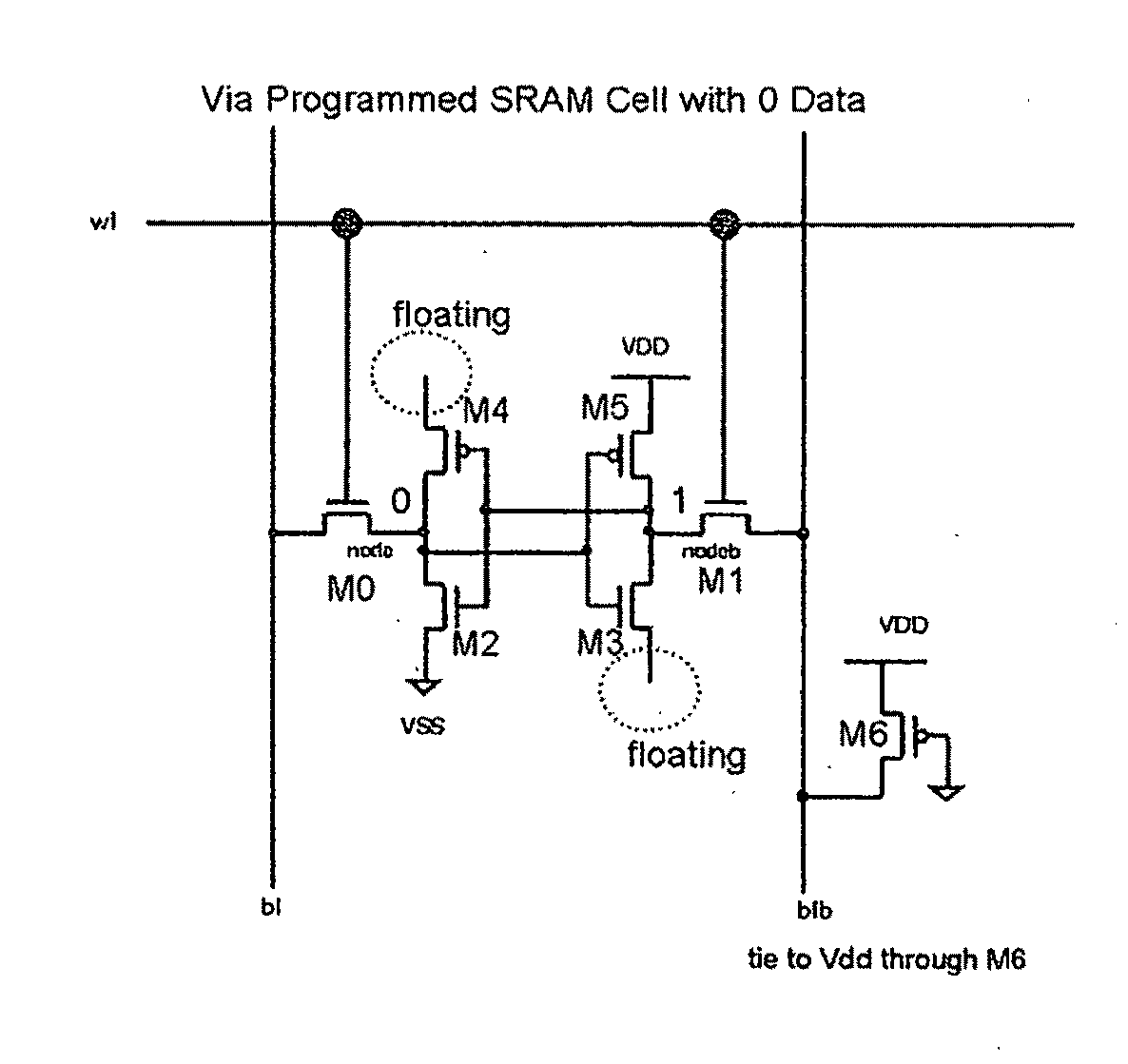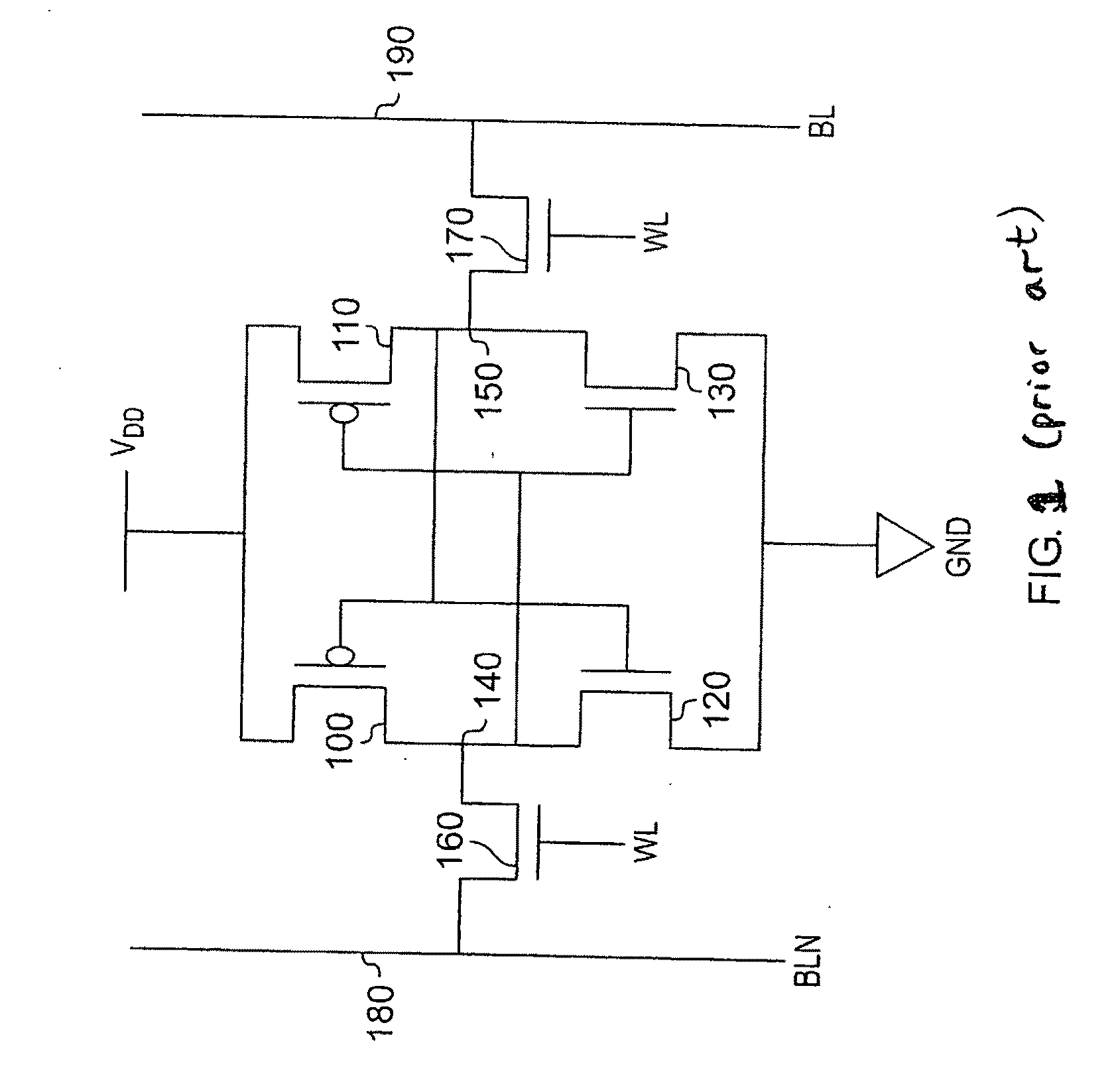Converting SRAM cells to ROM Cells
a technology of rom cells and sram cells, applied in the field of data storage cells, can solve the problems that previous testing and verification of the system may need to be redone, and the system replacement of sram with rom will need a substantial redesign, so as to achieve the effect of simple and straightforward way
- Summary
- Abstract
- Description
- Claims
- Application Information
AI Technical Summary
Benefits of technology
Problems solved by technology
Method used
Image
Examples
Embodiment Construction
[0048]FIG. 2a shows a conventional SRAM 6T cell that has been via programmed to convert it to a cell that when powered always stores a 0. Thus, in effect it has been converted to a read-only memory ROM cell. This has been done by removing the vias that were previously present connecting the source of PMOS transistor M4 to the high voltage line VDD and the drain of NMOS transistor M3 to the low voltage line VSS. This means that the high voltage line VDD has nowhere to drain to and thus, node b is held at a 1, and meanwhile there is no power to transistor M4 and thus node is held at a 0. Thus, this device is very similar to the conventional SRAM cell shown in FIG. 1 except that the vias have been removed that would have connected the transistors M4 and M3 to respectively the high and lower voltage supplies. Thus, rather than being a bistable device that can switch between two stable states it is now held in one of those stable states. The state it is held in is a state where a zero is...
PUM
 Login to View More
Login to View More Abstract
Description
Claims
Application Information
 Login to View More
Login to View More - R&D
- Intellectual Property
- Life Sciences
- Materials
- Tech Scout
- Unparalleled Data Quality
- Higher Quality Content
- 60% Fewer Hallucinations
Browse by: Latest US Patents, China's latest patents, Technical Efficacy Thesaurus, Application Domain, Technology Topic, Popular Technical Reports.
© 2025 PatSnap. All rights reserved.Legal|Privacy policy|Modern Slavery Act Transparency Statement|Sitemap|About US| Contact US: help@patsnap.com



